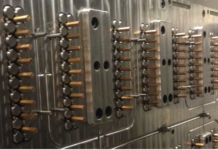The pigging pipeline process involves launching a pig inside a pipeline for various purposes; these include cleaning and providing information about the condition inside the pipeline. However, during the course of this cleaning and inspection process, sometimes, the pigs can get lost or stuck in the pipeline. Hence, knowing their whereabouts becomes vital to the success of the pigging process.
This is where pig tracking becomes useful. This process provides numerous benefits and is an essential aspect of the pigging process. In this article, we will be taking a deep dive into the concept of pig tracking, why it’s needed, and how it is different from pig locating.
What is Pig Tracking?
Pig tracking is a method of identifying the whereabouts of the pigs in a pipeline to see how far they have reached, if they are performing effectively, where they are currently located, and if they are possibly stuck. It helps to ensure that the pigs have sufficiently passed through the pipeline and did the job they were supposed to do.
Pig tracking involves the use of pig trackers, pig signallers, or pig detectors that are mounted at specific locations on the exterior of the pipelines. Depending on the type, they might be mounted permanently or temporarily on the pipeline.
Most pig trackers come with a Pig Tracking Receiver (PTR) and transmitter. The transmitter penetrates the pipeline using low-frequency signals, which are then used to send the receiver to update information about the pigs in the pipeline. The receiver is then used to show the transmitter’s signals through audio or visual notification, such as with LED lights.
Benefits of Pig Tracking
- It makes the overall job easy and simple
The most significant benefit of pig tracking is the fact that they make the job of maintenance workers much easier and less costly. For example, instead of excavating and opening pipelines to locate the pig, you can simply attach the pig tracker to the pipeline. You will not even need to open the pipelines.
- They don’t require maintenance
Moreover, installing pig trackers is very easy and simple. They don’t require much maintenance either since they are durable and long-lasting on their own.
- Cost-effective method
Pig tracking is a cost-effective method of detecting the movement of the pigs and seeing whether they are performing adequately or not.
- Likely to be error-free and reliable
The chances of errors when it comes to pig tracking, especially if you use devices or specialized tools, are unlikely. They are reliable most of the time and less error-prone. Furthermore, when it comes to subsea pipelines and onshore pipelines, opening them up manually and detecting the movement of the pigs is not possible. This is where pig tracking becomes useful since you can attach the pig tracker, and it will do the job externally.
- It helps keep things moving
If your pig or any material is stuck or lodged in the pipeline, pig tracking allows you to identify exactly the location of the stuck pig. As a result, you can quickly dislodge it and fix the issue to help keep the process quick and seamless.
- They are portable
With the right pig tracker, you can expect the process to be efficient and portable. Most trackers tend to be lightweight and small, so you can easily attach or detach them whenever you need to. This is quite helpful if you have multiple pipelines that you need to oversee.
What is The Difference between Pig Locating and Pig Tracking?
Though more often than not, both pig locating and pig tracking are used interchangeably, the two have a significant difference between them. Pig tracking encompasses the entire pipeline; the pig tracker travels throughout the pipeline to identify the pig. However, pig locating involves identifying the current location of the pig without having to travel through the pipeline.
Pig tracking involves monitoring the pig from the point it is launched to the end of the pipe. Another significant difference between the two is that pig locating involves locating the pig, whereas pig tracking involves monitoring the pig from the launch.
The Bottom Line
There is no doubt that the pig tracking process is extremely significant and integral to the pigging process. For the efficiency of pipelines, you need a good pig tracker. If you are looking for a high-quality pig tracking system for your pipelines, don’t hesitate to reach out to Online Electronics.
Website: https://www.online-electronics.com/
Author Bio:
Andy Marwood Andy has spent almost 25 years in the pipeline pigging industry spanning construction, pre-commissioning & pipeline operations. He joined Pipeline Engineering & Supply Co after studying at Liverpool John Moores University. After 17 years at Pipeline Engineering in various roles (including 6 years on the board of Directors) he joined Online Electronics in 2015 where he is Managing Director. Andy’s professional interests are in company growth, through both product development and geographic expansion.


















